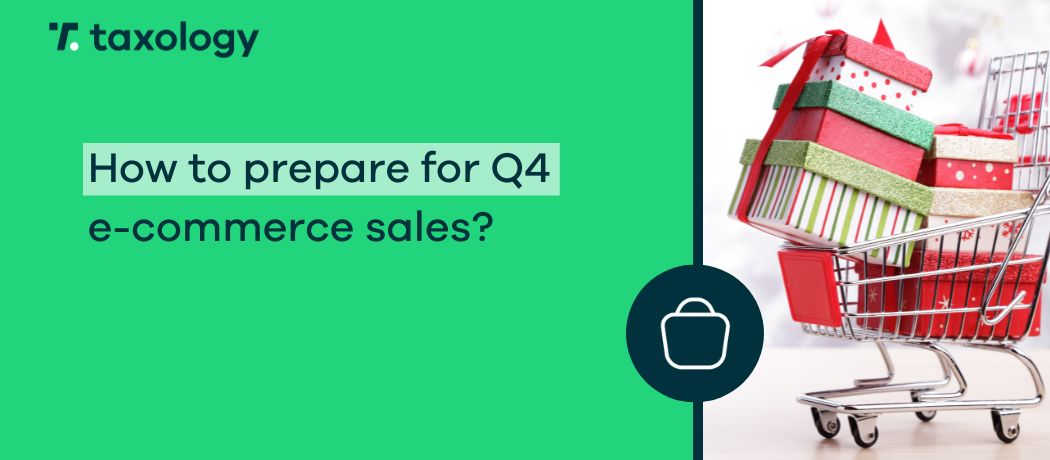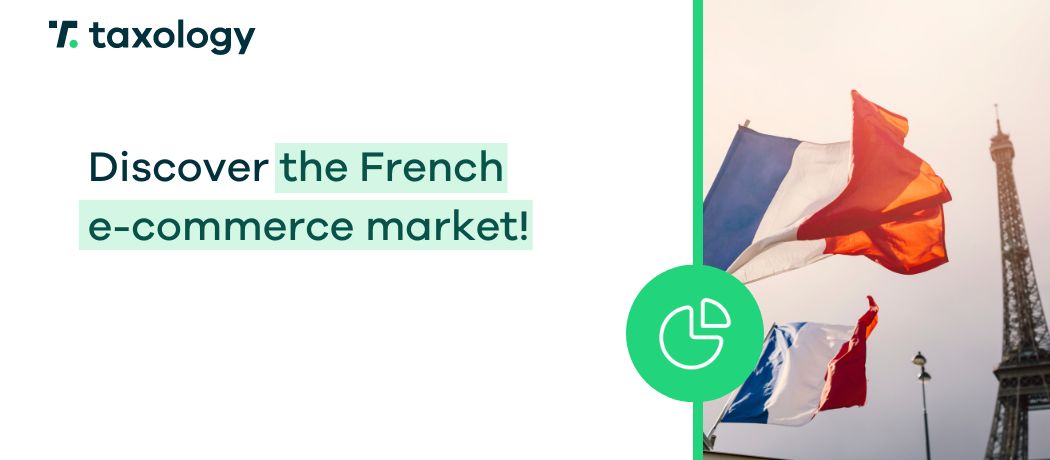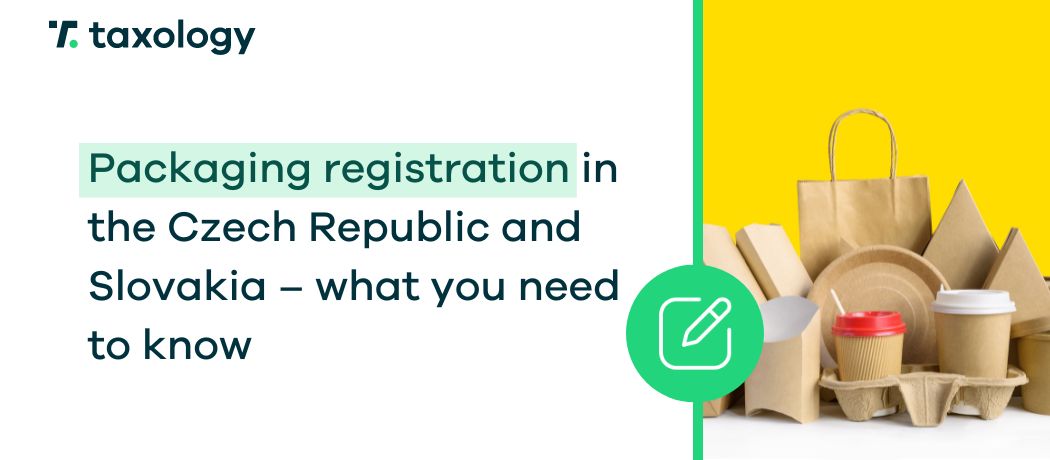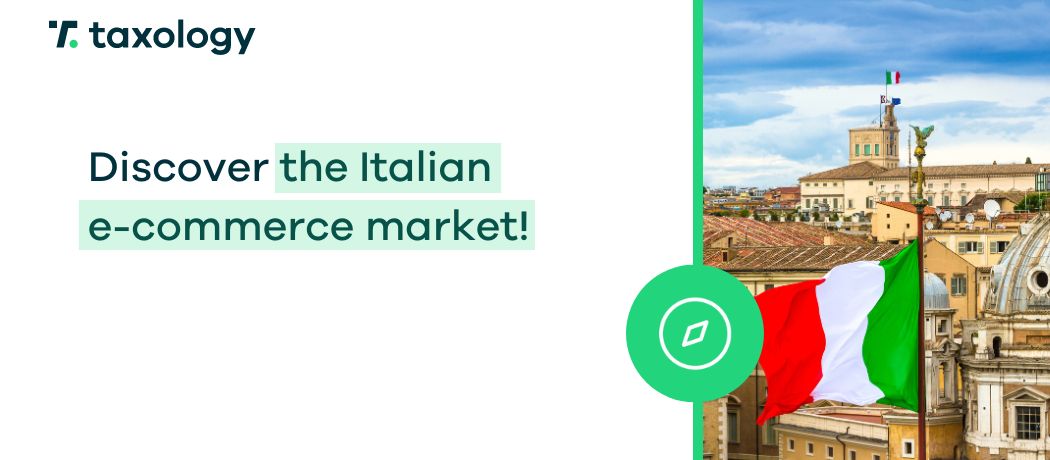France is one of the largest and wealthiest countries in Europe, making it an extremely attractive market for expansion for many entrepreneurs in the e-commerce sector. However, like any other […]
Read in: 5 minHow to prepare for Q4 e-commerce sales?
- Last update: 23.02.2024
- Published: 30.08.2023
- Read in: 8 min
For quite some time, it’s been widely recognised that the 4th quarter brings about a shopping frenzy, associated with numerous holidays, including those from abroad that have either already made their way into Europe or are gaining traction in the markets of the “Old Continent.” As a result, retailers frequently encounter the task of gearing up for the final three months of the year, and doing so well in advance is crucial. Neglecting this preparation can lead to missing out on a significant number of sales opportunities.

Which holidays to look out for in Q4?
The last quarter of the year offers multiple chances for personal shopping or buying gifts for others. Keeping this in perspective, let’s explore the particular occasions that can sway and motivate potential customers to make purchases.
Halloween – 31 October
The first of the big shopping occasions in Q4 is Halloween, which takes place on 31 October. This trend is increasingly noticeable in Poland. However, there is no denying that the biggest spending associated with All Hallows’ Eve takes place in the US, where millions of dollars are spent on candy, costumes, decorations and greeting cards for the occasion every year.
Double 11 / Singles Day – 11 November
Occurring on the 11th of November, Singles’ Day, also recognised as Double 11 or the Global Shopping Festival, originally emerged as a holiday in China. Until 2009, it primarily involved small business owners offering discounts in their stores on that specific day. However, in the final year of the first decade of the 21st century, the Chinese online platform Alibaba initiated promotions for this occasion, sparking a trend that continues to grow today. In 2021 alone, Chinese online platforms reported sales exceeding $139 billion, marking a year-on-year increase of 25%.
Interestingly, Polish companies have also seized the opportunity presented by the surging popularity of the 11.11 holiday by creating various promotions to commemorate the day. Polish consumers, in turn, can find the most significant sales, particularly on AliExpress. Nevertheless, these promotions are also available on platforms like Taobao, Tmall, and other marketplaces from China.
Black Friday – 24 November
This year’s Black Friday falls on November 24th, occurring right after the American Thanksgiving holiday. It has long served as the kick-off for the pre-Christmas shopping season, featuring a plethora of promotions and sales. In the realm of e-commerce, these offers often extend throughout the entire weekend or even the entire week.
According to data provided by the Tpay service, last year’s Black Friday witnessed a remarkable 118% increase in sales at stores that partnered with the aforementioned service compared to the rest of November. Additionally, the average number of transactions rose by 34%.
Cyber Monday – 27 November
Cyber Monday, an originated sales event in the United States, takes place on the first Monday following Thanksgiving. It primarily impacts e-commerce enterprises, offering discounts on products like appliances, computers, TVs, and other electronic or digital items, including games and e-books. In contrast to Black Friday, Cyber Monday deals typically extend for a full 24-hour period.
According to data from CyberMonday.Global, in 2021, shopper engagement during this shopping event surged by 292% when compared to the average annual rate.

St. Nicholas Day, Free Shipping Day, Christmas Eve and New Year’s Eve – 6, 14, 24 and 31 December
While the November holidays we’ve discussed are undoubtedly remarkable, they also set the stage for the December festivities, encompassing St. Nicholas’ Day and Christmas. As a result, many individuals start stocking up on gifts for their loved ones in November. However, for e-commerce companies, December emerges as the busiest month of the year due to the Christmas season.
Among the unique dates mentioned here is the US-based Free Shipping Day, scheduled for December 14th this year, marking its 15th occurrence. On this day, retailers commit to providing free shipping and delivery for items purchased before Christmas.
Furthermore, even though sales typically taper off after Christmas, it’s essential to keep New Year’s Eve in mind. Many individuals prepare for this occasion by considering decorations, party supplies, or finding suitable attire for the celebration.
Conducting a stock audit
Shifting our focus to the preparations linked to Q4 sales, there are several steps that can be implemented to reduce the likelihood of complications in the sales process. In this regard, specialists from Global24, with their expertise in cross-border e-commerce logistics, have generously shared their insights with us:
1) Preparation of a demand forecast
You can achieve this by reviewing your company’s sales data along with data from marketplace platforms over the past four quarters. Through this analysis, you can easily identify which products experienced higher demand and which ones had lower popularity during this timeframe. This assessment will facilitate better planning for procurement and supply operations.
2) Ensuring a safety reserve
Prior to the commencement of the fourth quarter, it’s advisable to boost your inventory by at least 10% as a precautionary measure to prevent stock shortages in unforeseen circumstances.
— Past experiences have shown that such scenarios are regrettably unavoidable during this period. For instance, last year, a notable courier service in the UK encountered issues with parcel deliveries, resulting in cancellations and returns — remarks Wojciech Bijan from Global24’s Sales Department.
3) Optimisation of warehouse operations
If you operate your own warehouse, it’s worthwhile to review your current procedures and, if needed, focus on optimising them. Analysing the last three months of the preceding year can provide valuable insights in this regard. Furthermore, the availability of warehouse personnel can be a significant consideration during Q4, prompting a thorough evaluation of workforce capacity.
Another critical aspect relates to the procurement of product packaging materials, which should be initiated by late September or early October. Early initiation of these orders helps prevent potential shortages or price increases resulting from heightened demand in the final quarter.
4) Cash flow management
Prior to the onset of Q4, it’s crucial to take into consideration that the heightened volume of product orders and packaging, along with possible returns, could lead to delivery price hikes with specific carriers. Consequently, this impacts the company’s expenses. Therefore, based on past-year analyses, it’s prudent to augment the projected Q4 budget by 10% and factor in the potential expenses associated with recruiting additional personnel.

5) Monitoring delivery times
The delivery timeframe plays a pivotal role in the sales process, emphasising the importance of consistent monitoring. In cases of delays, it’s beneficial to have backup plans in position and to promptly apprise customers of the situation.
— My experience in logistics has taught me that even negative information is more readily accepted than none at all — says Wojciech Bijan from Global24.
6) Preparation of a backup plan
Given all the aforementioned points, it’s advisable to prepare contingency plans for unforeseen circumstances. These plans may encompass various aspects, such as additional staffing, alternative courier options, or alternative warehousing solutions. However, it’s essential to recognise that these are merely illustrative examples applicable to any e-commerce business. Individual company cases should be assessed considering their unique processes and available resources.
Furthermore, when dealing with international shipping, it’s worth exploring the possibility of minimising transshipment points and allowing couriers to collect packages directly from the company’s warehouse. This approach enhances the confidence that shipments will be collected and delivered punctually.
7) Planning the returns process
Another important factor to keep in mind is managing the logistics of product returns, which holds particular significance, especially within the fashion industry. It is advisable to proactively plan this process and even manage the return frequency, an option provided by certain courier companies.
The advice mentioned above is provided by Global24, experts in international e-commerce logistics, and you can reach out to them at the provided contact address.
Additionally, we would like to highlight ongoing shopping trends. For instance, items like fidget spinners or pop-it toys once enjoyed significant popularity. Therefore, if you observe or anticipate that certain products in your inventory could align with a trend in Q4, it’s worthwhile to conduct a thorough market analysis for these products and, depending on the results, you can then ensure you have an adequate supply to meet potential demand.
VAT-related matters
Another factor tied to Q4 sales involves national legislation and VAT, particularly in the context of international sales. In the European Union member states, this process is subject to various standard conditions. These conditions include requirements such as local VAT registration and tax settlement in the purchaser’s country or through the VAT OSS. Consequently, it’s prudent to address any VAT-related concerns at least two months in advance to ensure full compliance with the formalities of the potential buyers’ countries.

However, it’s important to emphasise that the specified two-month timeframe for VAT registration applies to most EU Member States, but not universally. In certain countries, like Spain, the process may extend significantly as it involves obtaining an N.I.E. number, or the United Kingdom, which has been experiencing recurring issues with VAT registration over an extended period.
In these situations, it’s highly advisable to seek guidance from specialists, as requirements can vary based on factors such as product types, the target sales country, or the specific transaction type. If you require assistance with VAT-related matters in the EU or the UK, please don’t hesitate and schedule a free consultation.
Meanwhile, we will now outline the three most pertinent aspects related to VAT in cross-border e-commerce.
1) Limit on intra-Community distance sales of goods
Beginning on July 1, 2021, European Union businesses engaged in intra-Community transactions with private buyers from other member states encounter a €10,000 threshold. This limit applies to the total sales a company conducts with consumers in other EU countries.
Before surpassing this threshold, companies have the option to apply their home country’s VAT rates to the goods and services they sell and settle the VAT there.
However, once the threshold is exceeded, the business must apply the VAT rate of the buyer’s country to their transactions. They are also required to adhere to local regulations by declaring and settling the VAT in the consumer’s country. This process necessitates local VAT registration in the buyer’s country, for which an EU VAT number is required. In Poland, this can be obtained either by registering as a VAT taxpayer or by submitting an updated VAT-R form.
An alternative to local VAT accounting is utilising the VAT OSS procedure. This procedure enables businesses to forego local VAT registration and manage sales to private consumers in other EU Member States through a consolidated declaration process.

Need help with VAT or e-commerce accounting?
Contact us and indicate in which exact area we can help you and your company – declarations, settlements, VAT OSS or VAT EU!
Schedule a consultation
2) VAT OSS
VAT OSS (One-Stop-Shop) is a special procedure that, like the intra-community distance sales of goods limit, came into force on 1 July 2021, as part of the e-commerce package. It is designed for entrepreneurs who need to settle VAT on intra-Community transactions to private customers and want to do so via a single, summary declaration, while avoiding the obligation of local VAT registration.
It is worth noting that when opting for VAT OSS, the business must report all its sales. They cannot just settle part of their transactions using this method, and another part locally.
Furthermore, VAT OSS requires prior registration and the use of the procedure is possible from the quarter following the quarter in which we have informed the tax office of our wish to switch, and you can read more about this in our article “What is VAT OSS?”.
3) Warehousing goods abroad
The necessity for VAT registration and reporting goods movements also applies when you have goods stored abroad. It’s important to note that, in this situation, you must report the movements of the stored goods locally, including their sale within the country where they are stored. However, when it comes to selling these goods to another EU member state, you can simplify the VAT settlement process by using VAT OSS.
So, whether you have an overseas warehouse or use fulfilment services like Amazon FBA, it’s essential to have VAT registration in the countries where your storage facilities are situated.
When it comes to determining the most optimal solution, it ultimately depends on your specific circumstances and the particular scenarios you encounter, that’s why each situation is worth consulting with a VAT specialist! If you need an adivce, schedule a free consultation.
Ensuring your products are visible
After addressing all the aforementioned concerns, it’s crucial to also emphasise the importance of ensuring sufficient visibility for our products, whether they are sold through marketplace platforms or our own online store.
To understand the most effective approach to enhancing visibility, we sought advice from Gonito, specialists in the e-commerce sector. They provide assistance in managing and expanding sales on marketplace platforms.
1) SEO
Sustaining product visibility is an ongoing effort that involves feeding the algorithms. The most efficient approach to encourage search engines to elevate our online visibility is by creating content centred around keywords, essentially practising SEO (Search Engine Optimization).
This undertaking demands analysis and precision, with the objective of reaching individuals genuinely interested in the product or service. This, in turn, translates into tangible sales opportunities, as opposed to amassing random impressions. Hence, it proves advantageous to be selective when choosing the most fitting phrases.
SEO positioning serves as an effective strategy whether you are selling on a marketplace or managing your own online store. It serves as a valuable complement to PPC (pay-per-click) campaigns, which encompass paid advertising. When paired with organic traffic generation, these strategies collectively provide your products with optimal visibility.
2) The visual aspect
But how do you persuade customers to make a purchase once they’ve landed on your online auction? In the realm of online sales, where the physical touch and feel of products aren’t possible, the decision to buy hinges on what meets the eye. This visual experience is significantly enhanced by images, graphics, infographics, and models.
Listings featuring low-quality images lack appeal and fail to captivate potential buyers. Consequently, it is crucial to ensure that you have professional, high-resolution photographs and graphics. Furthermore, the selection of these visuals should be purposeful, with each one contributing value to the potential customer’s perception of the product.
If you want to guarantee that your products are strategically positioned for the upcoming ecommerce season, don’t hesitate to get in touch with Gonito and place your trust in their extensive years of experience!
How to prepare for e-commerce sales in Q4? - summary
The final quarter of each year undeniably marks a prime period for purchases, especially in the realm of online shopping. Consequently, meticulous preparation well in advance of this season becomes imperative to mitigate the risks associated with product shortages, staffing deficiencies, or excessive returns. If you require assistance with international logistics, the experts at Global24 are ready to offer their support.
Furthermore, after securing organisational and logistical aspects, attention must also be directed toward optimising the visibility of your offerings on the web, which primarily entails SEO enhancements and improvements in product imagery and descriptions. In this regard, you can seek guidance from the specialists at Gonito.
Moreover, if your Q4 plans involve warehousing goods in another country or selling to private consumers from foreign countries, it is advisable to proactively pursue local VAT registration or register for VAT OSS. Failing to address these matters well in advance may result in penalties, inevitably leading to diminished profits for the company.
Additionally, it’s important to keep in mind that VAT-related concerns should be addressed according to the unique circumstances of each situation. If you require assistance or expert guidance, don’t hesitate and schedule a free consultation with us. Discover how our VAT Compliance specialists can provide valuable support to you and your business, whether it’s concerning VAT registrations, settlements, VAT OSS, or VAT EU.



